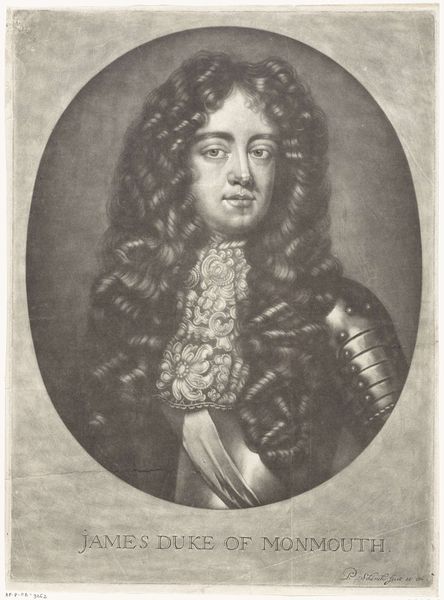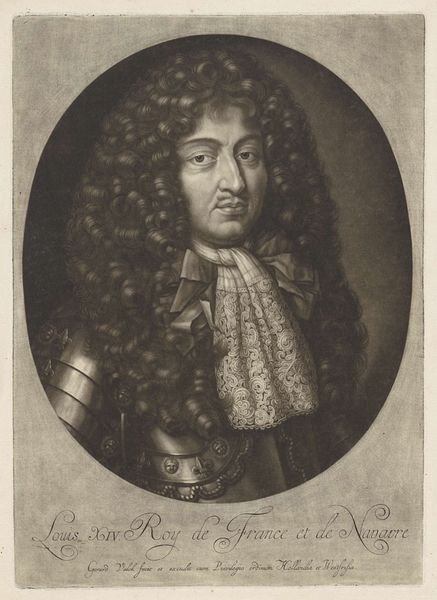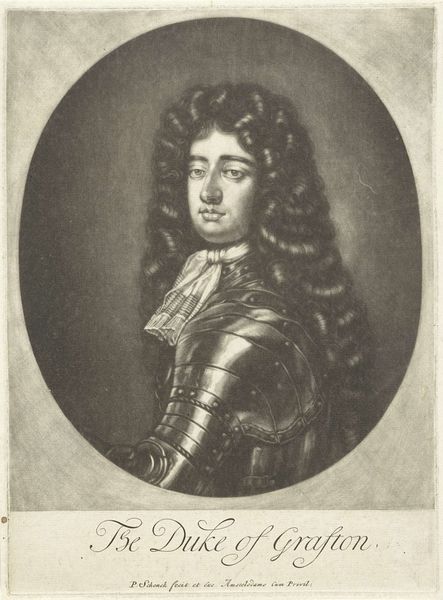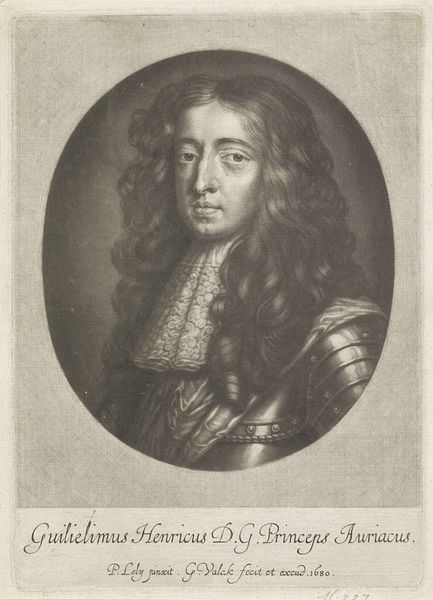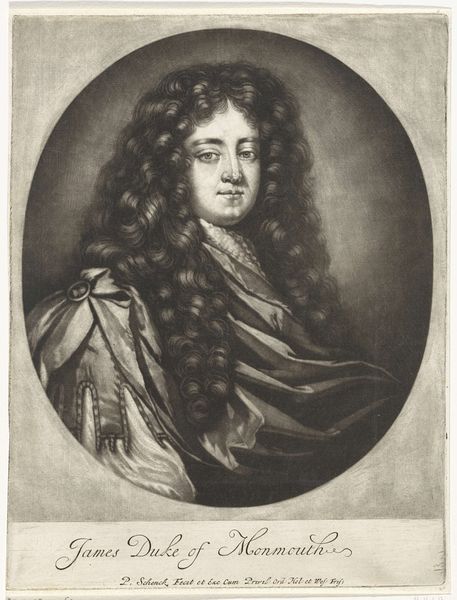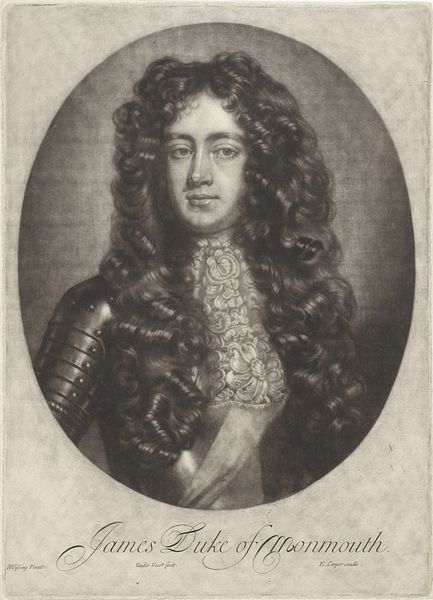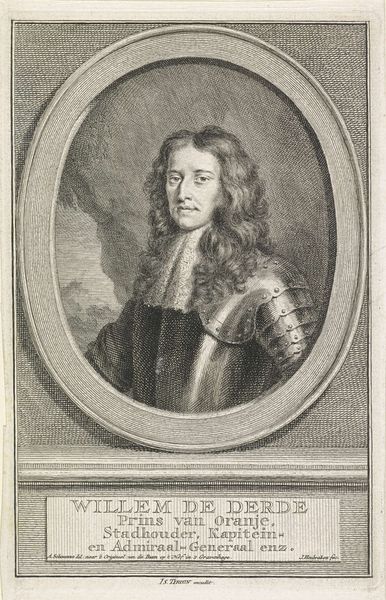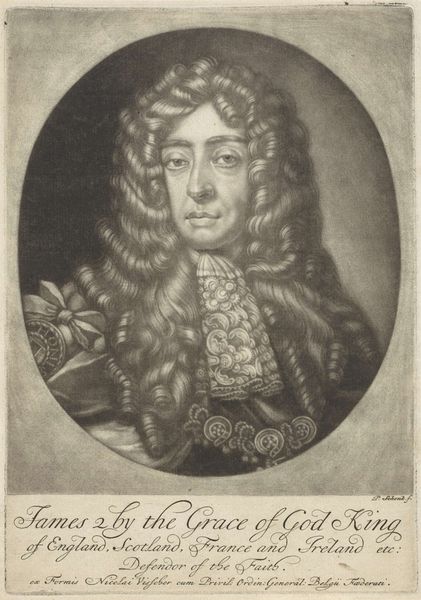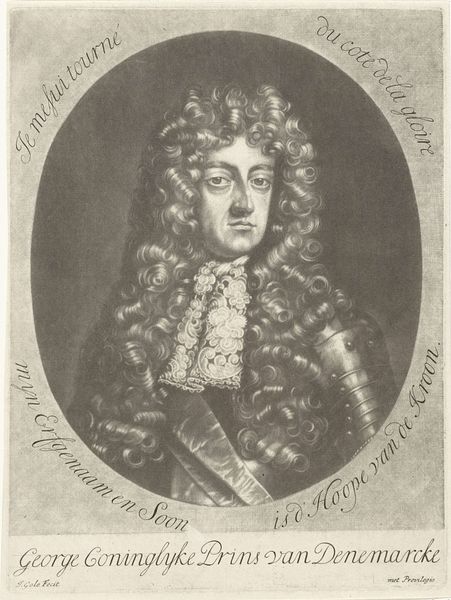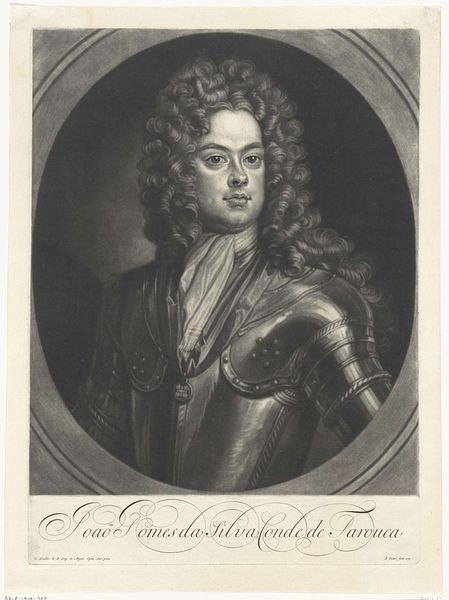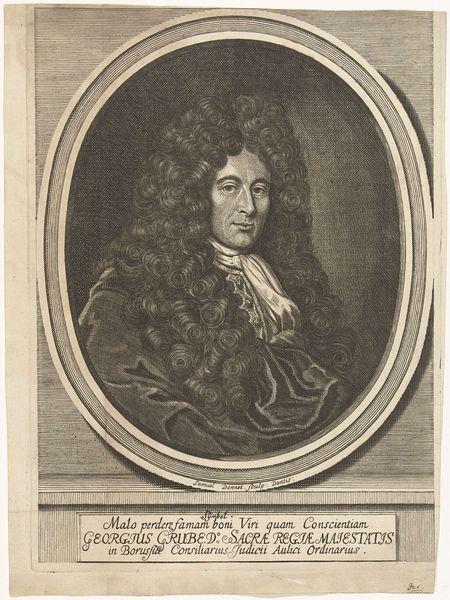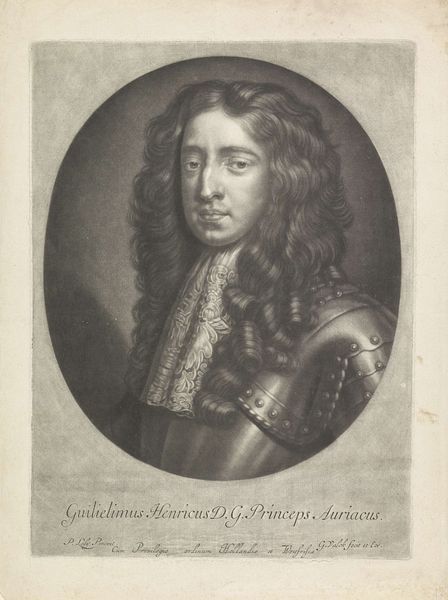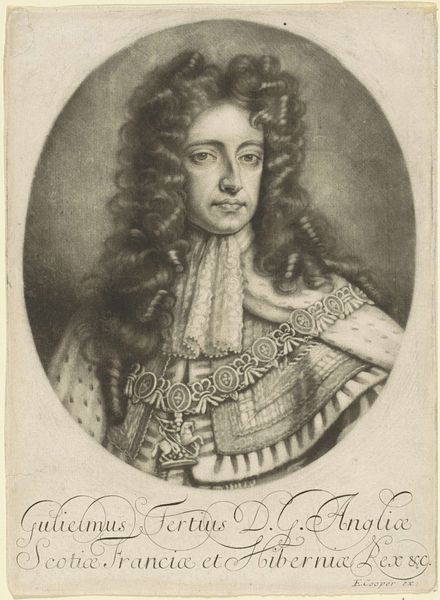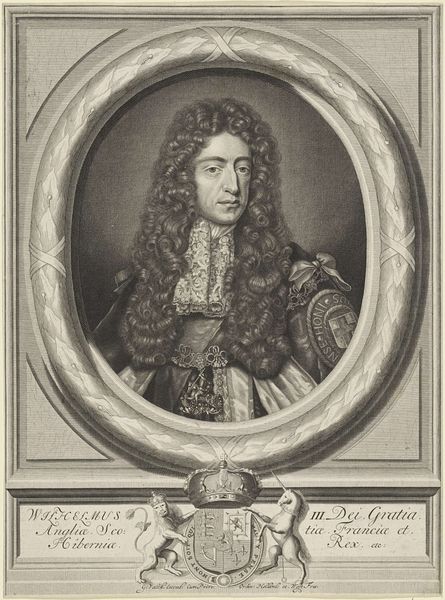
print, engraving
#
portrait
#
baroque
# print
#
old engraving style
#
portrait reference
#
engraving
Dimensions: height 198 mm, width 135 mm
Copyright: Rijks Museum: Open Domain
Curator: Up next, we have a look at "Portret van Willem III, prins van Oranje," a print by Jan (I) Griffier, dating somewhere between 1670 and 1718. Editor: There's an undeniably somber tone here, a formality that’s palpable. It is also striking how soft it seems given that this is an engraving. Curator: I am especially intrigued by how Griffier chose engraving as the medium, when the wealthy could clearly afford paint and canvas for portraits, what do you make of it? It almost seems...democratic. Prints made the image more accessible. Editor: The choice of an engraving suggests something beyond mere physical representation. Willem's power wasn't just temporal but carried a symbolic weight, that of the House of Orange, and its cultural legacy. Reproducing his image so democratically seems like dissemination of power to some extent. Curator: Precisely, and consider the materials. The copperplate used for engraving could be reproduced at scale. Each printed impression becomes a commodity, subtly circulating the sitter’s likeness but also placing it in a broader economic exchange. It also reinforces the cultural significance. Editor: And this is especially reinforced with the deliberate inclusion of the armor, signifying military prowess and by extension, security for the realm. Notice how his lace jabot contrasts with this warlike attire, underscoring status but simultaneously complicating the message by conveying some degree of affability and softness. Curator: A very calculated display indeed, likely meant to reinforce and negotiate his power in different registers. One does also wonder, if he participated in decisions around the details included in the piece, perhaps down to the very details about paper stock. After all, it is likely he paid for this commision, even if via a proxy or third party. Editor: A perfect point! All to highlight both the earthly power, which comes from the attire, but also the ethereal power suggested in his composed and somber expression, reinforced by repetition. One feels a continuous tradition rather than a passing man. Curator: It truly allows one to imagine the web of resources—human labor, materials, distribution networks, that coalesced to create and disseminate this portrait of Willem III. Thanks for exploring those symbols. Editor: Thank you; it has given me a great appreciation for how visual iconography informs how historical figures and historical power are recorded through time.
Comments
No comments
Be the first to comment and join the conversation on the ultimate creative platform.
